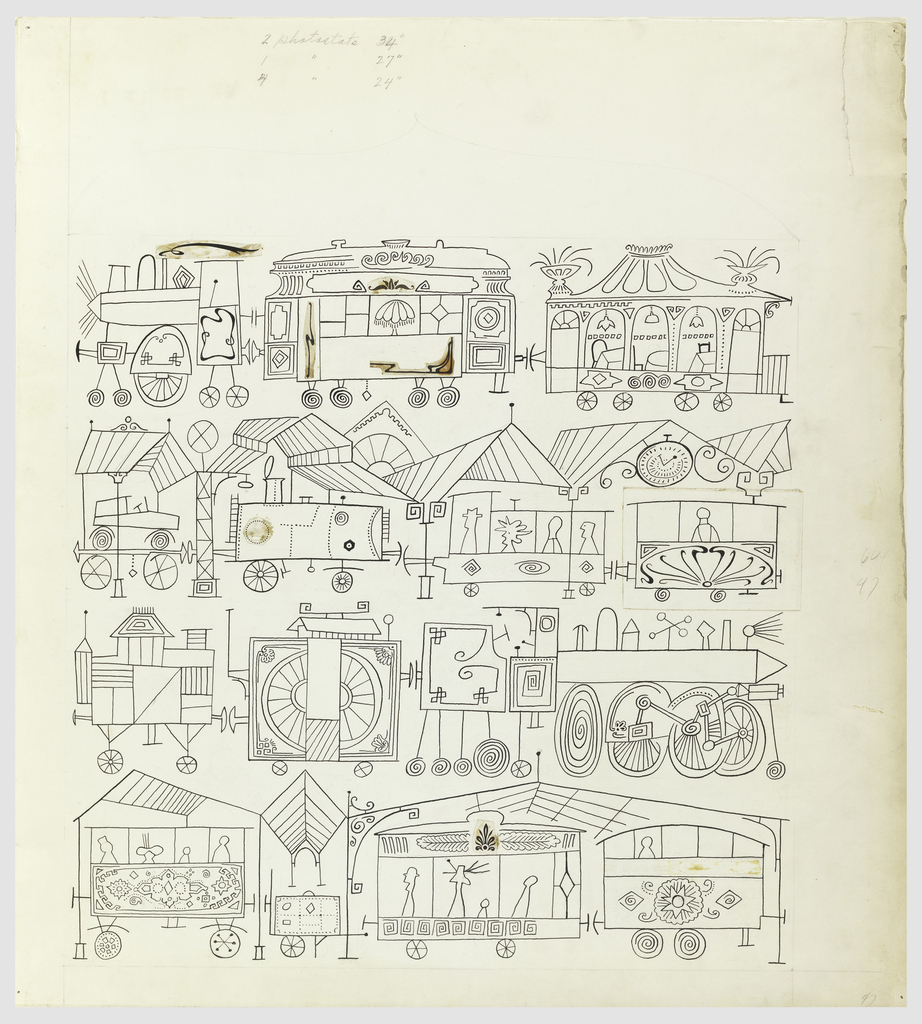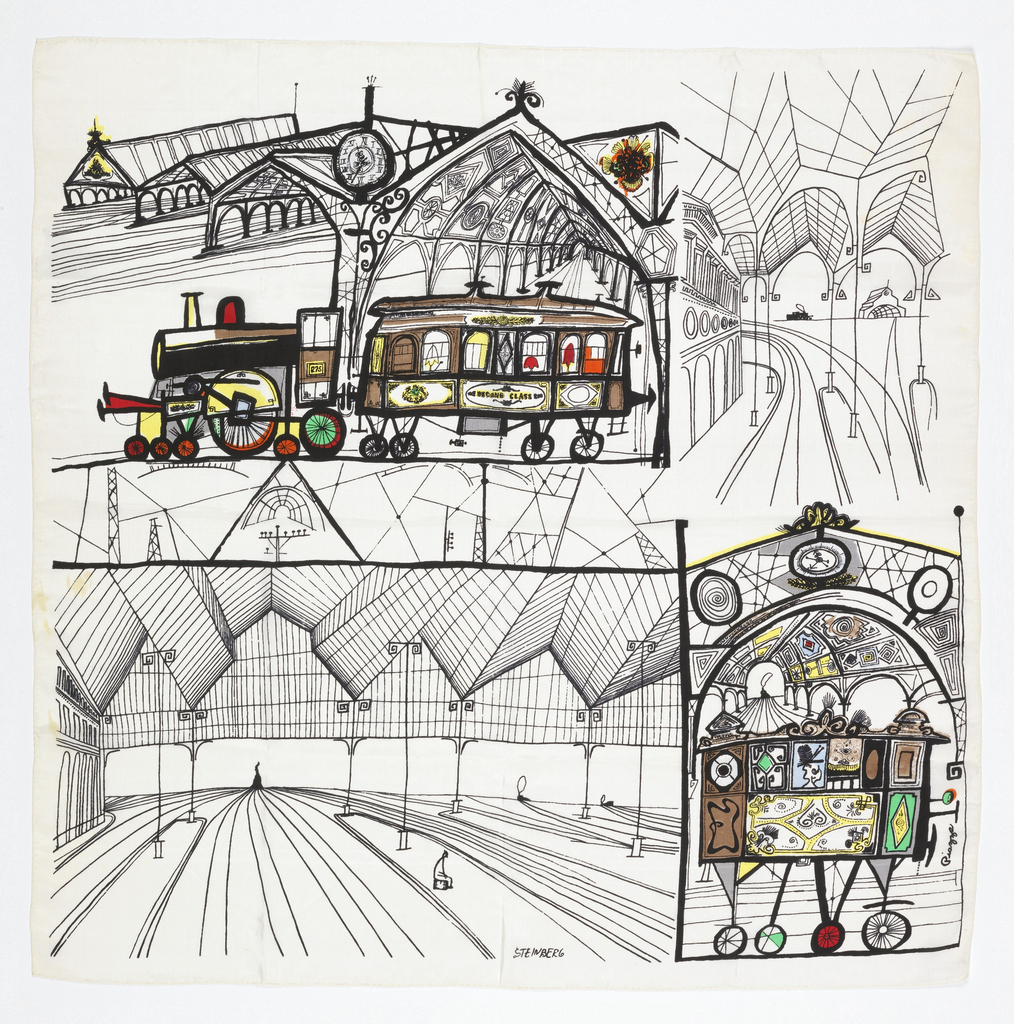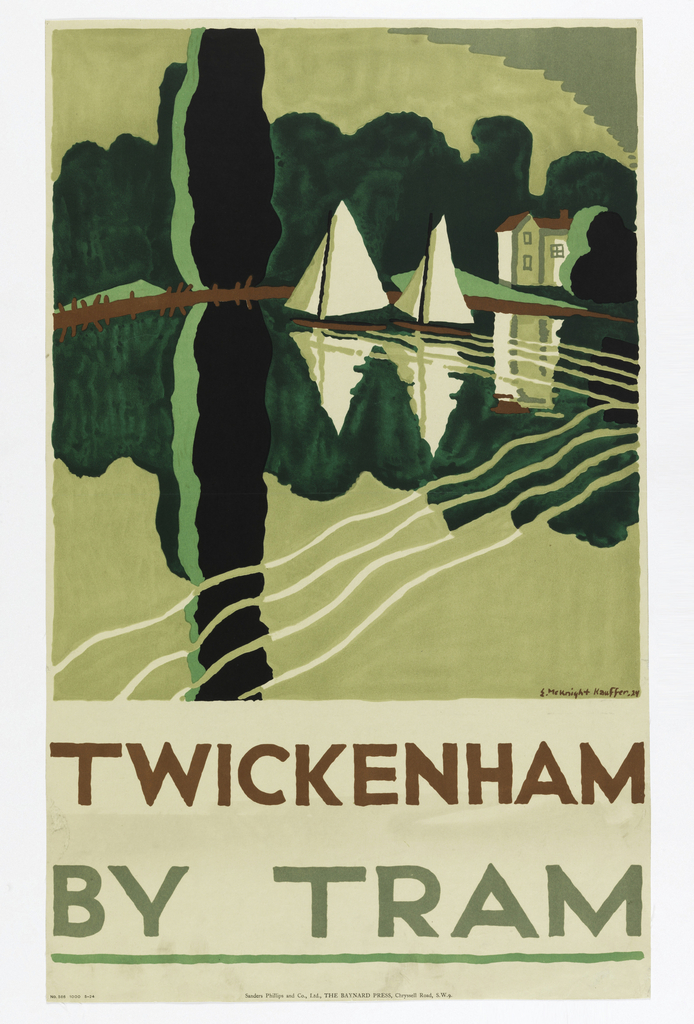Born in Romania in 1914, Saul Steinberg once described himself as “a writer who draws.”[1] Steinberg fled Europe in 1941, settling in New York City by 1942. While living in the United States, he traveled widely and observed the world around him in a highly whimsical style with an eye toward criticism and satire. Steinberg’s...
Author: Leigh Wishner September is New York Textile Month! In celebration, members of the Textile Society of America will author Object of the Day for the month. A non-profit professional organization of scholars, educators, and artists in the field of textiles, TSA provides an international forum for the exchange and dissemination of information about textiles...
London Transport posters played an indispensable role in the field of graphic design, particularly in the 1920s and 30s. In 1908, Frank Pick assumed responsibility for London Transport’s publicity and commissioned designs from internationally known artists as well as promising newcomers. Among them, a talented American poster artist and graphic designer, Edward McKnight Kauffer (1890-1954), helped...
By the year 2050, about 80% of the earth's population will reside in urban centers with much less space and resources available to support the current personal automobile, sprawl, and highway infrastructure-focused transportation paradigm. Speakers Dickson Despommier, Dan Albert and Sue Zielinski will present their visions for the future of cities that include models for...
Why? Trains are among the most sustainable forms of transportation, and the AGV is at the forefront of high-speed, energy-efficient train design. Ninety-eight percent of the train is built from recyclable materials, its traction systems and low weight are energy-efficient, and its permanent-magnet synchronous motors and regenerative braking system create electricity and minimize energy loss.




